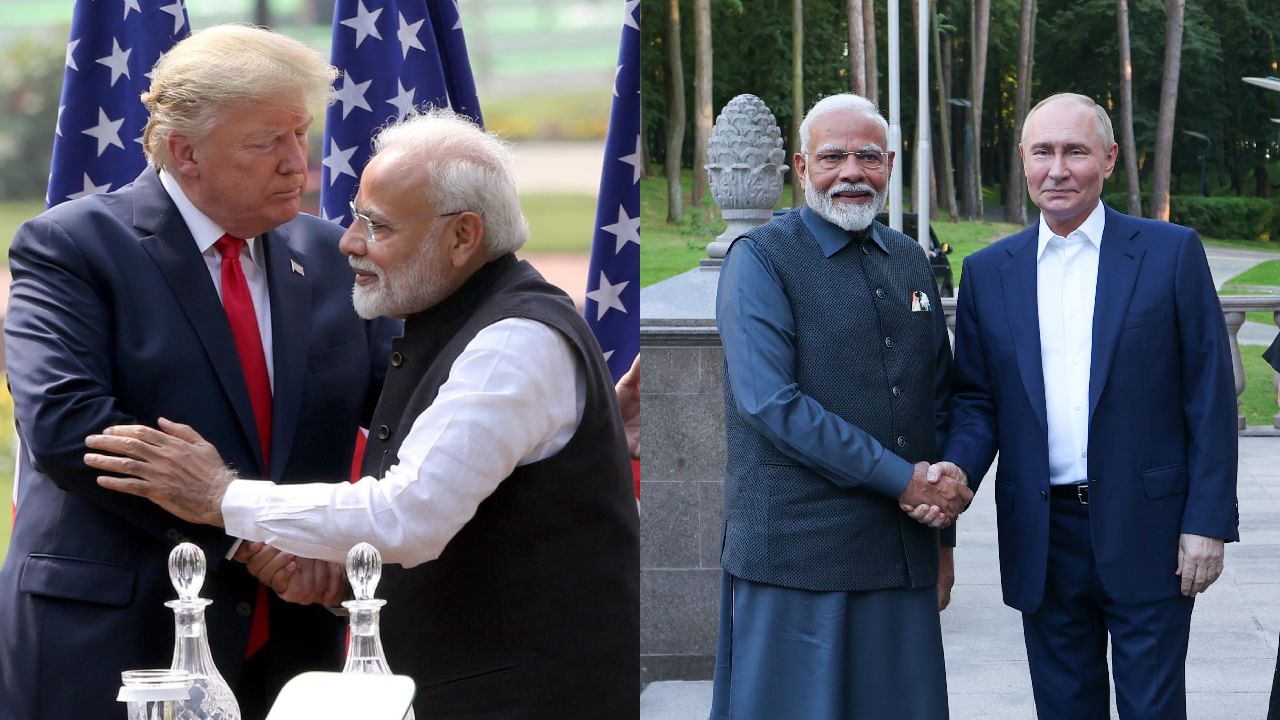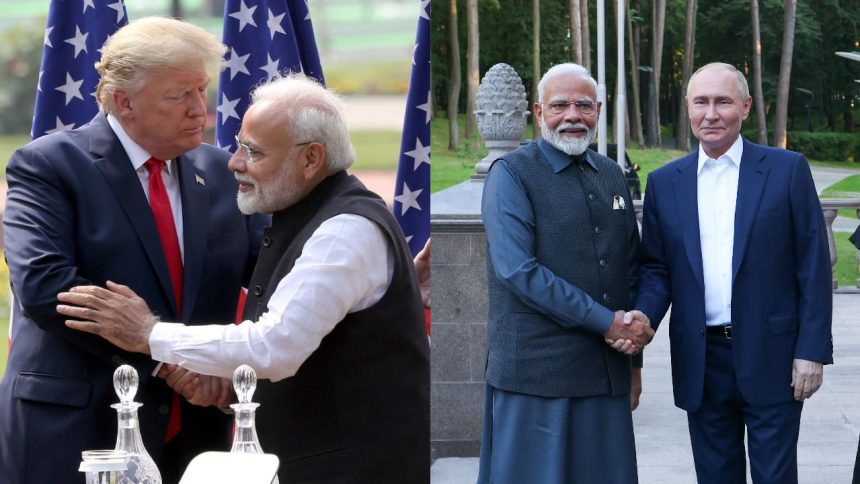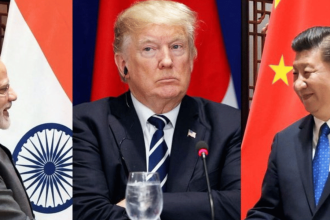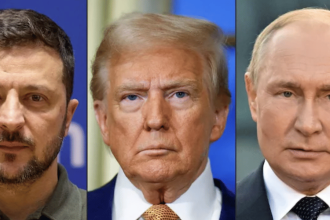
Washington DC: During World War II, the U.S. and the Soviet Union came together to defeat Hitler. Now, nearly 80 years later, global geopolitics is shifting rapidly, and a new challenge has emerged—China’s aggressive expansionism and economic dominance.
On February 12, a significant phone conversation between U.S. President Donald Trump and Russian President Vladimir Putin signalled that the U.S. and Russia might align again. But this time, standing alongside them as a strategic partner in India, a rising global power.
If this “triumvirate” of Narendra Modi, Donald Trump, and Vladimir Putin comes together, it could be one of the most consequential geopolitical shifts of the 21st century. Are we witnessing the rise of a new “Three Musketeers” alliance, working to contain China’s growing influence?
Modi-Trump-Putin: Common Vision, Strong Chemistry
The emerging alignment between these three leaders is not just about strategic interests but also about their shared vision for global power dynamics.
Donald Trump: The US President aims to restore America’s global dominance. His “America First” policy is centered on countering China’s growing influence, which he sees as the biggest threat to American economic and strategic interests.
Vladimir Putin: While Russia has been closely aligned with China in recent years, the reality is that Moscow remains uneasy about Beijing’s rise as a global superpower. China’s growing economic and military strength is a long-term strategic concern for Russia. For Putin, balancing ties with the U.S. and India while maintaining leverage over China is a rational move.
Narendra Modi: As India cements its status as a key global player, its Indo-Pacific strategy is heavily focused on countering China’s aggressive actions. From China’s Belt and Road Initiative (BRI) to border tensions and Beijing’s influence in South Asia, India views China as its primary geopolitical challenge.
Modi has already cultivated strong diplomatic and personal relationships with both Trump and Putin, making him a crucial player in this evolving alliance.
The alignment of these three leaders is driven by a common goal—containing China’s influence while reinforcing their own global standing.
Putin and Trump’s Conversation: A Shift from Biden’s China Policy
Trump’s conversation with Putin marks a major shift in U.S.-Russia relations from the Biden era. Under Biden’s leadership, Washington’s hostility toward Moscow pushed Russia into China’s embrace, leading to a growing partnership between Beijing and Moscow. This alliance, while seemingly strong, has created unease in both Washington and New Delhi.
Trump’s return to the White House has now set the stage for a recalibration. Unlike Biden, Trump believes that bringing Russia closer to the U.S. will weaken China’s position. This is a direct reversal of Biden’s policy, which drove Russia and China into an anti-Western bloc.
Sources suggest that Trump is planning a visit to Russia—something unimaginable during the Biden years. If this happens, it will mark the beginning of a new phase in U.S.-Russia relations, potentially pulling Moscow away from Beijing’s orbit.
Is Russia Comfortable with China?
While Russia and China are strategic partners, their relationship is far from seamless:
Economic Dependence: Russia’s economy has become increasingly reliant on China due to Western sanctions, making Moscow uncomfortable with Beijing’s growing leverage.
Central Asia Tensions: China’s increasing influence in Central Asia—historically a Russian sphere of influence—is a cause of concern for the Kremlin.
Defence Competition: China is emerging as a competitor in defense and energy markets, areas where Russia has traditionally been dominant. Putin knows that an overly strong China is not in Russia’s long-term interests. Aligning with the U.S. and India, even if cautiously, could serve as a counterbalance.
How Modi-Trump-Putin Could Contain China
If the U.S., Russia, and India join forces, they could create significant challenges for China’s ambitions. Potential steps in this strategy include:
Strengthening Indo-Pacific Strategy
The U.S. and India are already working together in the Quad alliance (along with Japan and Australia) to counter China’s influence in the Indo-Pacific. If Russia supports this initiative, it would limit China’s maritime dominance.
Economic Pressure on China
Trump has already waged a trade war against China before, and his administration is expected to renew economic restrictions. If Russia and India also reduce trade dependency on China, Beijing’s economy could suffer significantly.
Challenging the Belt and Road Initiative (BRI)
China’s BRI has been expanding its influence in Asia, Africa, and Europe. A joint U.S.-India-Russia strategy could create alternative trade and infrastructure networks to counter Beijing’s ambitions.
Strengthening Military Cooperation
If the U.S., India, and Russia expand military collaboration, it could force China to reassess its aggressive strategies in Taiwan, the South China Sea, and the Himalayan border regions.




